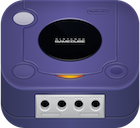
The earliest Gamecube development hardware available to game developers was known as the Dolphin Development Hardware or simply DDH for short. This system was sold before the other development kits were finalised, allowing game developers to get a head start on Gamecube development 1.
It was built by Applied Microsystems Corp (AMC) and just looked like a standard light grey PC tower with dolphin logo on the front and some Gamecube controller ports.
The systems seems to have been distributed with software called the gameOptix DVD Development Kit by AMC, presumably this was used to send the game data to the hardware 2.
The Prototype version of the DDH has RJ-11 ports instead of gamecube ports and apparently the system runs at 3/4 the speed of a retail Nintendo Gamecube 3, which isn’t exactly ideal for development but would be fine if just used for debugging non-performance related issues.
According to leaked Nintendo internal documentation NPDP standard for Nintendo Pseudo Disc Pack 4 which are a suite of development tools that used a cartridge to read/write gamecube games. These cartridges were basically hard disk drives used as game cartridges for developers to write games to them and allowed faster load times than reading from a physical disc.
The cartridge consists of a Toshiba IDE Hard Disk Drive (HDD) along with a PATA connector which slots into one of the NPDP development tools or Flash Writers.
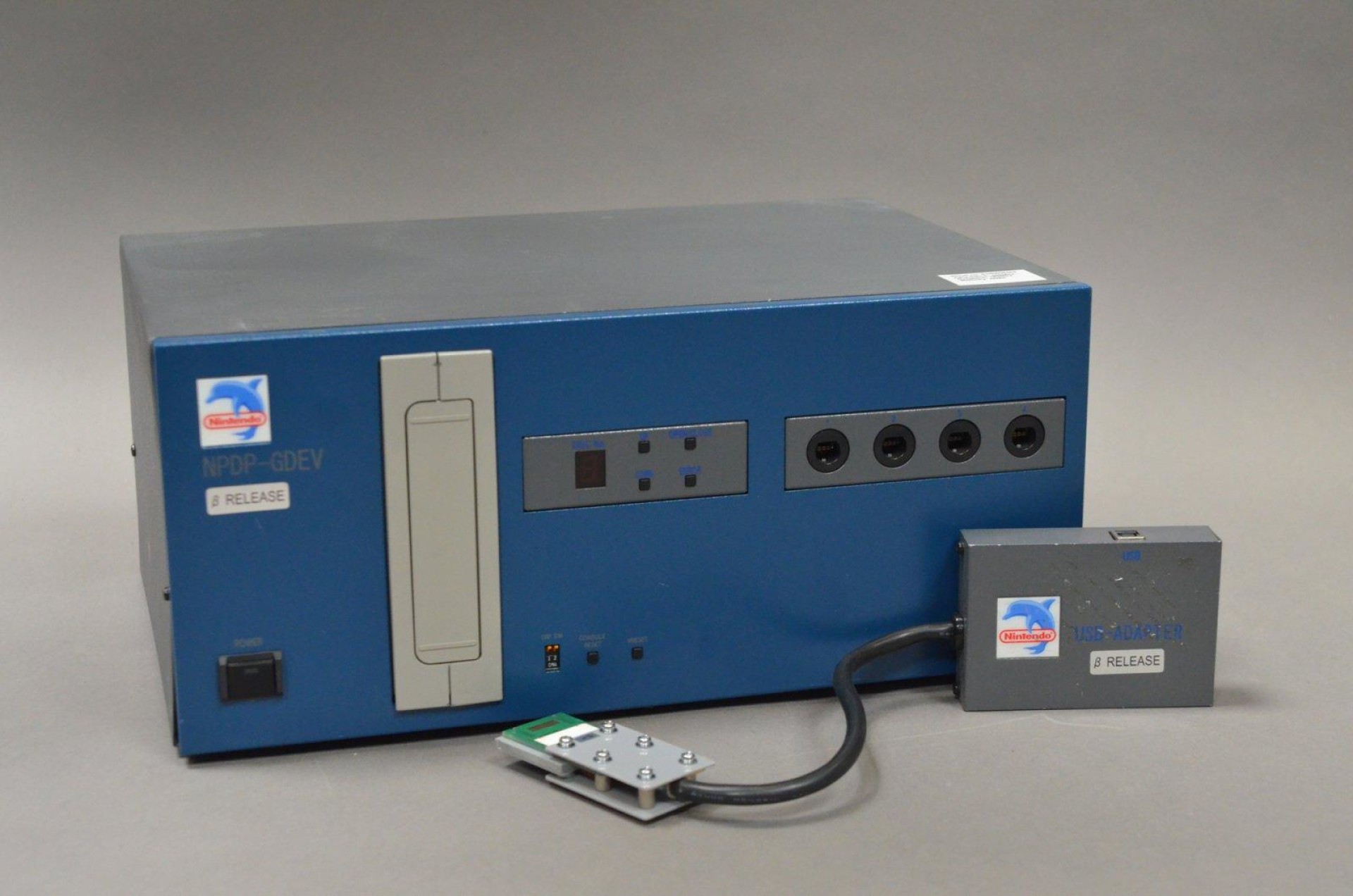
The GDEV unit was built using an Orca board, which was the name of the board used for very early prototype Gamecube development 5. It has four standard Gamecube ports on the front, a cartridge slot for NPDP cartridges and DIP switches which control the region (PAL/NTSC-J etc). As the NPDP cartridges could store up to 3 different games there is buttons. to control which game will be inserted, including a small LED panel displaying the number of the current game.
It is aimed at programmers directly and allowed standard debugging features such as breakpoints and memory editing. The main benefit of this unit was the built in NPDP-ODEM companion card, this allowed it to connect to a PC with the NPDP-ODEM PCI card and stream game data directly from the PC instead of using the NPDP cartridge. This was much faster for development as there was no need to write a cartridge every single time and updates could be fairly quick.
Developer Jeff managed to find an extremely rare prototype NPDP-GDEV which would only have been sent to a select few developers in the early stages of the Gamecube. It did not run at full speed initially, but this unit was upgrades to run at full Gamecube speed later down the line.
So heres a bit better quality image of the elusive Nintendo Gamecube GDEV Prototype "Beta Release" With Beta ODEM & Beta USB Adapter Module.
— Developer Jeff 🕹️ (@OfficialDevJeff) March 26, 2021
If you have any questions, thoughts, or conerns please drop them below.!
Thanks and all the best.
-Jeff pic.twitter.com/oGPiGzIadZ
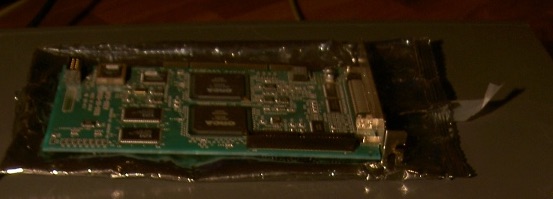
The Optical Disk Emulator (ODEM) PCI card was used to send game data to the NPDP-GDEV development kit, instead of using a NPDP cartridge, as it was generally easier for developers to connect directly from PC than to write a NPDP cartridge every time they wanted to run the games.
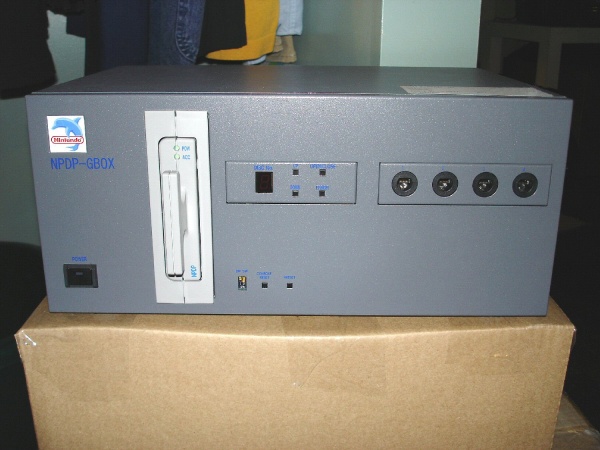
The GBOX was very similar to the GDEV unit but instead of being focussed for programmers it has more of a focus on testing. The main feature it lacks compared to the NPDP-GDEV is the lack of connecting to the Optical Disk Emulator (ODEM) PCI card 6, so it could only test games from the physical NPDP cartridges that had been written using one of the NPDP Writers (NPDP-GW/NPDP-SW).
Later on in the Gamecube’s lifespan a much cheaper option for testing NPDP cartridges became available called the NPDP Reader.
it was very similar to a retail Gamecube apart from the giant NPDP cartridge reader on the top instead of the optical drive. In fact for you take the NRDP cartridge reader part away from the rest of the console and hook it up to a retail Gamecube and it would work just fine, in fact this is commonly used for dumping NRDP cartridges 7.
This mostly replaced the need for a NPDP-GBOX and was much cheaper due to it being a modified retail Gamecube system with the Optical Disc drive being replaced with a NPDP interface slot.
However it lacked any method of communicating with a developers PC, which is where the IS-DOL-VIEWER would come in.
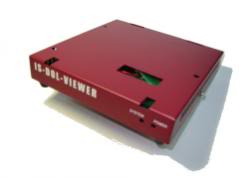
Intelligent Systems have a history of creating IS-Viewer cartridges for Nintendo consoles such as the Nintendo 64 and the Gamecube was no different. It connected to the bottom of the NPDP Reader console and enabled communication with a development PC over a RS-232 cable, making it similar to the NPDP-GBOX.
The main purpose of this unit however was for Assert creators (Graphics artists, Sound engineers, 3D Animators etc) to preview how their game assets would look (or sound) when played on real Gamecube hardware. This has the advantage of being a cheaper solution than buying asset creators their own NPDP-GBOX and so they didn’t need to share time with other programmers and Testers on the team.
It provided a High Speed USB 2.0 interface to connect to the Developers PC which allowed very fast transfer of Game assets for previewing on the Gamecube hardware 8. It also boasts about being the only Gamecube development hardware that natively supports the Apple Macintosh, which was a popular platform for content creators at the time.
According to the official Intelligent Systems Website it also provided a connector to the NPDP-GDEV and AMC DDH development units by using an optional connector called the IS-DOL-VIEWER MEMORY CARD SLOT I / F kit 8. The main advantage of this would be to use the Intelligent Systems previewing tools and Macintosh support.
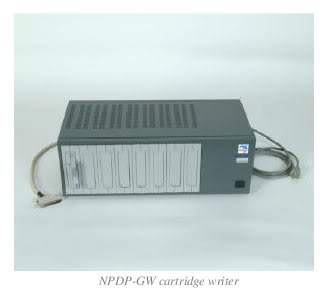
The NPDP Gang Writer (NPDP-GW) for Gamecube had 8 slots available to place blank NPDP cartridges in and it will write the same game to all 8. This would be especially useful when sending out prototypes to a team of QA engineers, as far as we know it was never used to send to Journalists as they would not have the equipment available to read the NPDP cartridge.
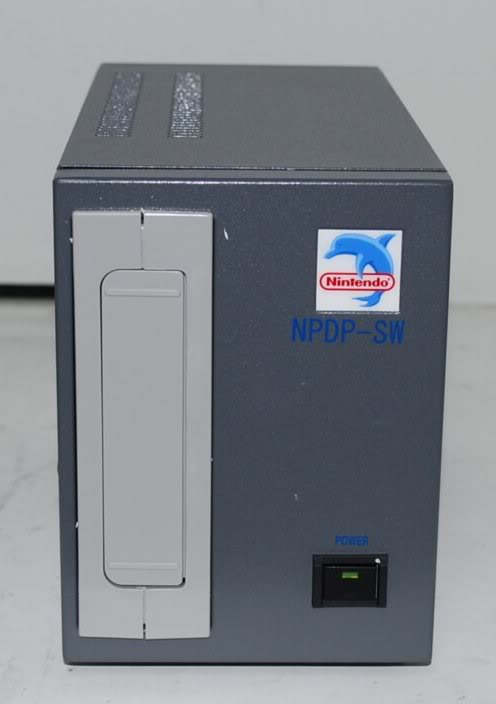
The little brother of the NPDP-GW is the NPDP Single Writer (NPDP-SW) which has the same function but only one port for writing to a single NPDP cartridge. This was much more convenient for sharing individual game builds throughout the team.
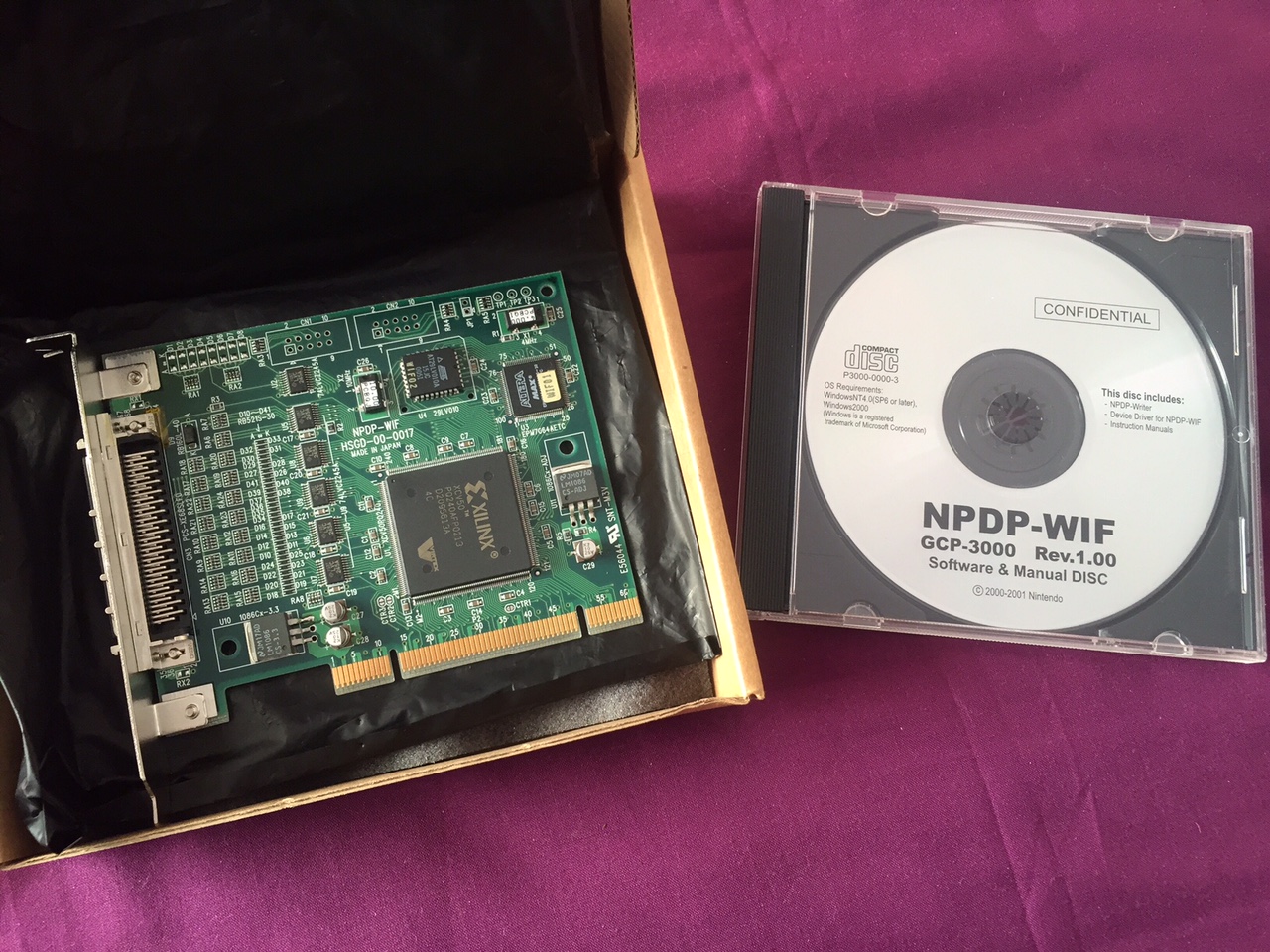
This PCI cart connected to the Gang/Single NPDP writers and is required for them to be able to write any data. it also comes with software for the PC which contained the device drivers and also an application called NPDP-Writer which was used to burn NPDP cartridges.
The NR-based development kits came out at the same time as the NPDP kits and had the advantage of using fairly cheap DVD-Rs, known as NR Discs to store games. The downside is that a new CDR would need to be burned for each build, meaning it was a lot more wasteful than the NPDP development options.
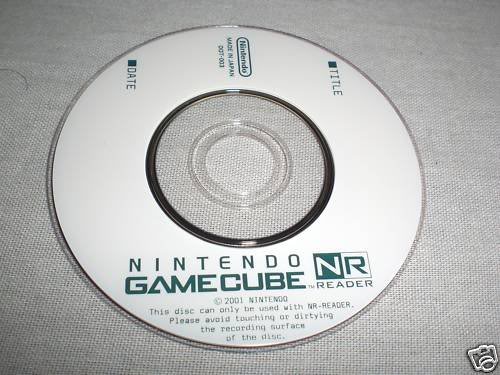
The Gamecube NR Discs are a small 8cm DVD-R that developers would write to using an NR-Writer and could only be played back on specific gamecube hardware called the NR-Reader. NR Disc were mainly used as a convenient testing solution as they could be easily burnt and given to a team of game testers to play on their NR-Reader consoles.
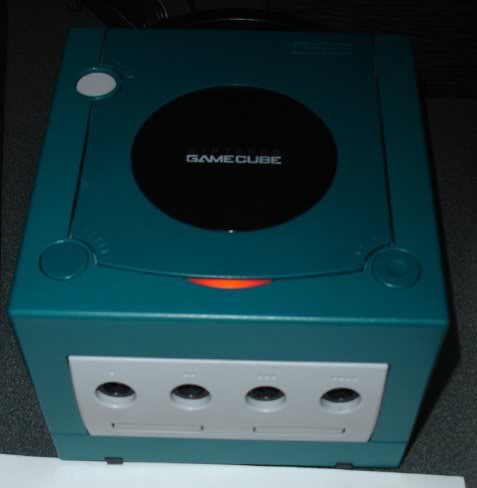
The Gamecube NR-Reader was a slightly modified retail Gamecube unit that could only play burned development NR discs, so it doesn’t play any retail game discs. Its purpose was to get as close to testing on a retail machine as possible, so no debugging features were present on these consoles.
The main modification to the hardware other than the optical disc reader is that it has a switch on the side to switch between different regions (PAL/NTSC) 9.
𝘿𝙚𝙫𝙚𝙡𝙤𝙥𝙚𝙧𝙨 𝙆𝙞𝙩 𝙤𝙛 𝙩𝙝𝙚 𝙙𝙖𝙮
— 🕹 ᄃӨᄂӨПΣᄂ FΛᄂᄃӨП 🕹 (@ColonelFalcon) December 1, 2018
If you’re wondering why this #Gamecube has such an odd color, that’s because it’s a devkit. This is called an NR- reader. It only reads NR discs. #gaming #nintendo #gamersunite pic.twitter.com/rXA20vuTnc
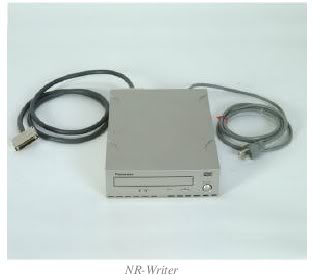
The Gamecube NR Writer connects to a developer’s PC via a SCSI port and allows burning of Game Cube Image files (GCM) to NR discs. According to Nintendo this would only take about 20 minutes and you could even daisy chain multiple NR-Writers together to write up to 4 images at once! This gave it a similar functionality to the Gang Writer for NPDP cartridges.
According to a post on AssemblerGames these writers are not unique to Nintendo and were used outside the games industry, but Nintendo got special permission from Panasonic to write custom firmwares for these drives to produce NR discs 9
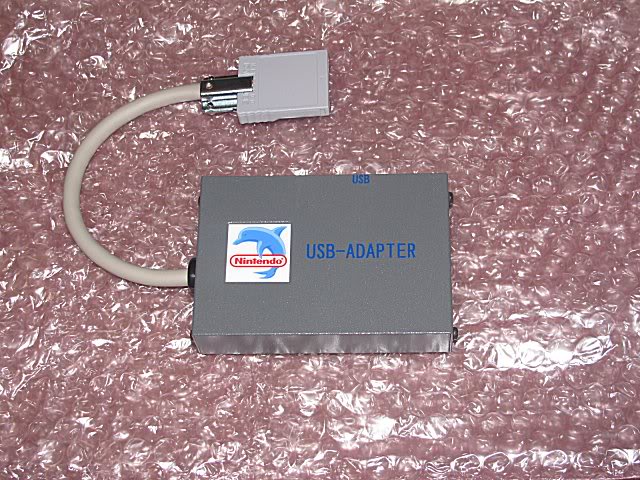
The GCP-2000 USB Adapter connects via a Gamecube’s memory card slot and has a usb port allowing communication between a developer’s PC and the Gamecube hardware. The EXI bus on a Gamecube is used to connect external peripherals including the memory card and so this hardware just provides an interface between that EXI Bus and USB.
SN Systems are very well known for their quality third party development kit hardware and SDKs and the gamecube was one of the last non-Sony platforms that they supported after being bought out by Sony.
SN Systems (Creator of Development Tools)
For more information on SN Systems check out this post.
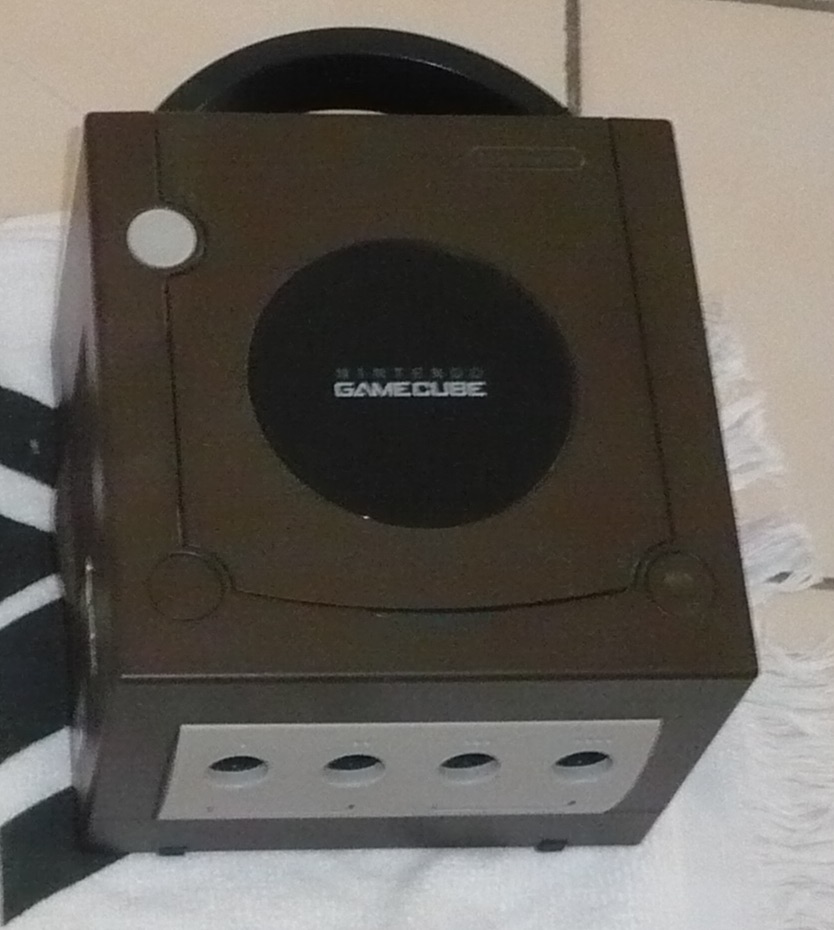
The SN Systems Tiny Development Kit or SN-TDEV for short was a cheaper alternative to the other development kits and was very popular in Universities teaching game development along with smaller third party game developers. They require a license to use which apparently only lasted a single semester so the University would need to keep renewing them from SN Systems every term that they wanted to run the course 9.
It cannot play regular retail games, only Burned NR-discs, but it also has a fast USB 2.0 connector which can be used to emulate the Disc drive on a developers PC, skipping the need to burn NR Discs.
It provided double the amount of RAM (48MB) as a standard Nintendo Gamecube which allowed the ability to send compiled ELF executables to the system to debug and run 10.
The SN-TDEV unit supports the SN Systems SDK known as PRO-DG, including the performance optimiser known as Tuner 10.
𝘿𝙚𝙫𝙚𝙡𝙤𝙥𝙚𝙧𝙨 𝙆𝙞𝙩 𝙤𝙛 𝙩𝙝𝙚 𝙙𝙖𝙮
— 🕹 ᄃӨᄂӨПΣᄂ FΛᄂᄃӨП 🕹 (@ColonelFalcon) January 5, 2018
This is a chocolate brown #Nintendo #Gamecube TDEV. It’s a devkit that was also used in Universities. It does not play regular games, only NR discs. (Found at https://t.co/RfI4EsLWv6) #retrogaming pic.twitter.com/W7uVfQBGfP
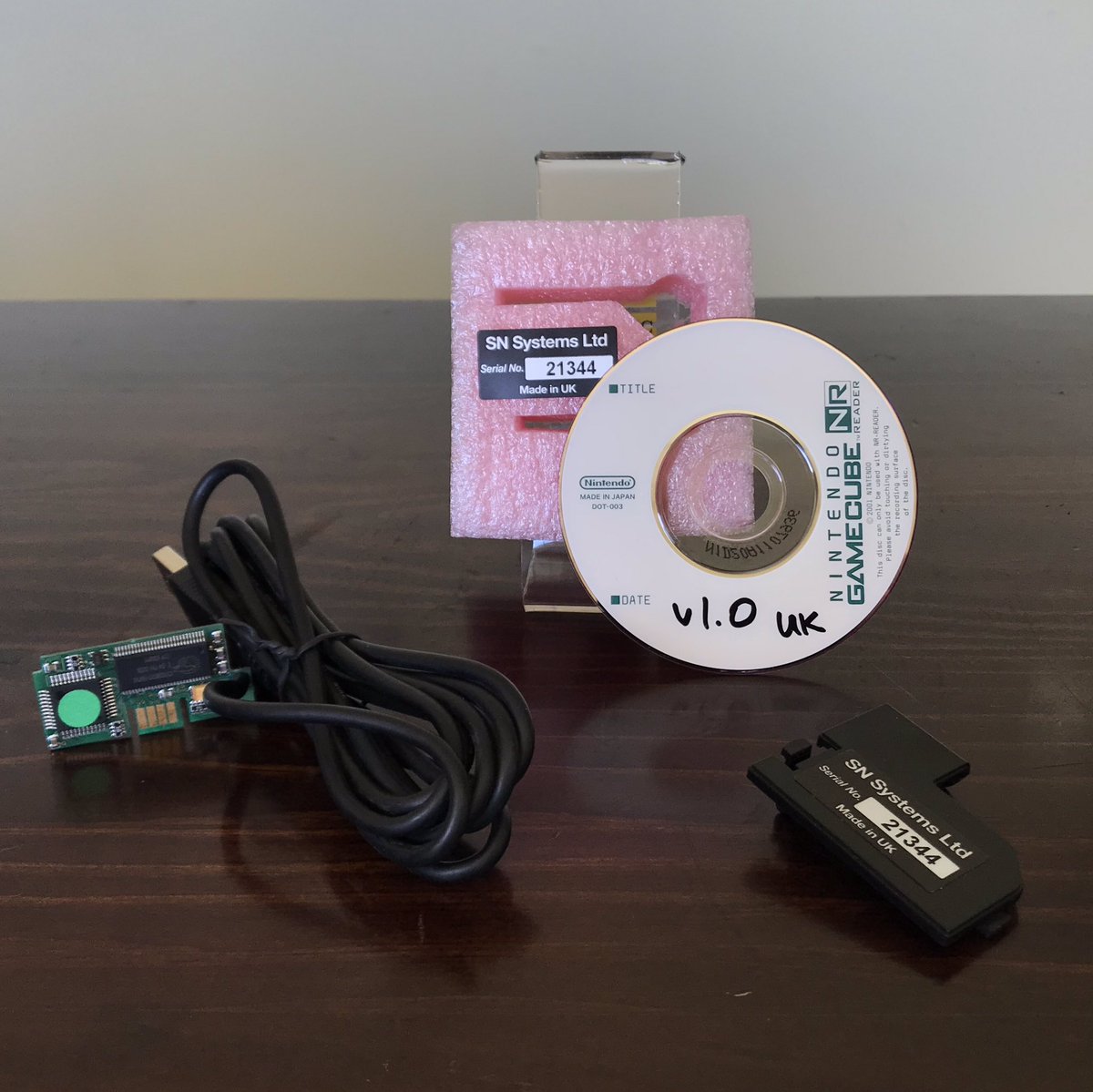
The SN Systems ProDG Devlink was hardware supplied with the SN Systems ProDG SDK known as ProView, which is similar in function to the IS-DOL-VIEWER in that it targeted asset creators rather than programmers 11. It connects to the NPDP Reader or NR Reader consoles and provides a USB interface to allow content creators to send assets to the Gamecube quickly. The image on the left was kindly provided by Shane Battye over on his twitter 12.
Here is an image of the Pro-DG SDK package that was sold to developers, looks beautiful but it was very expensive for only 150mb of data:
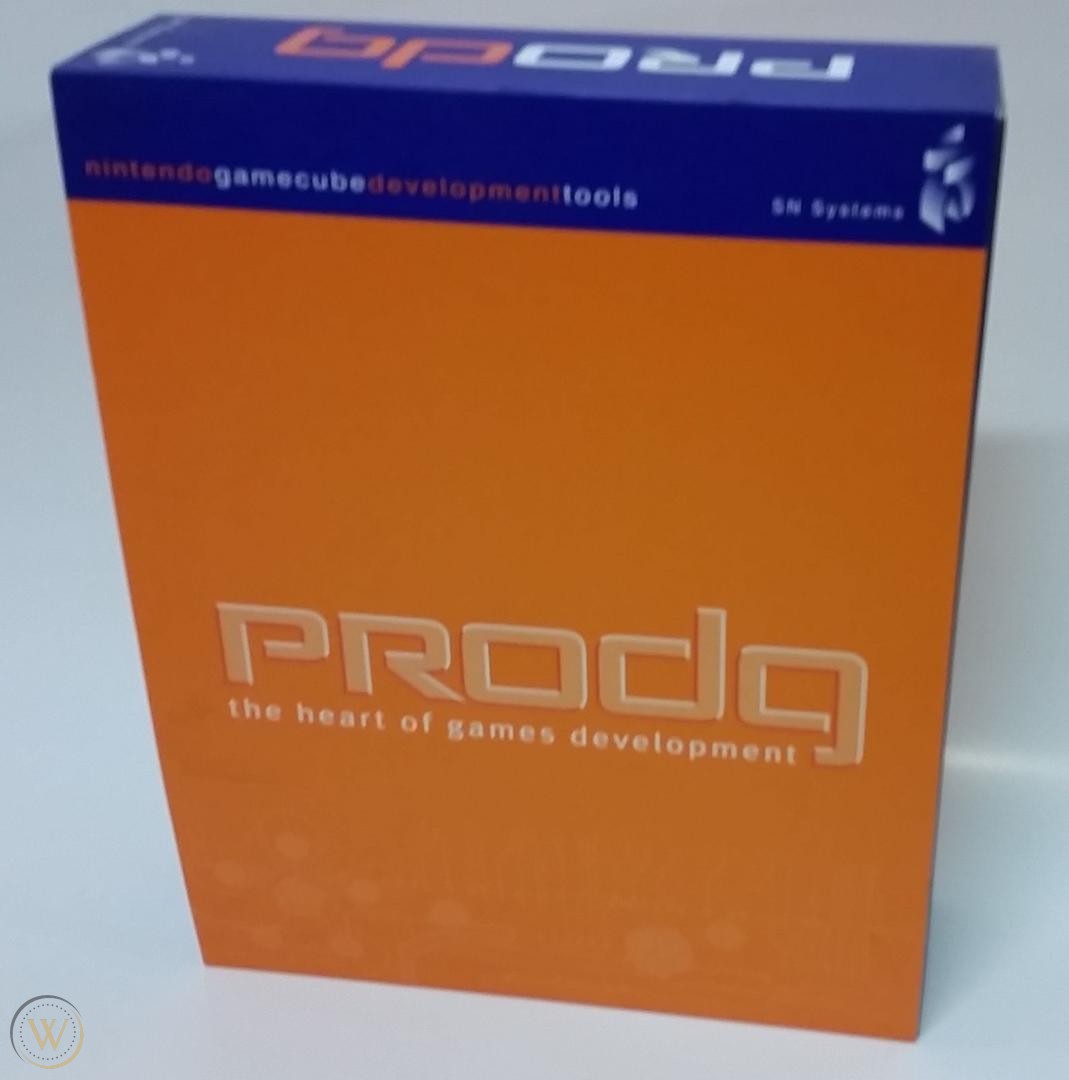
Interesting little tool for NR-Readers and GameCube dev - this is an SN Systems ProDG devlink kit pic.twitter.com/KClW9Br2DB
— Shane Battye 🎮 (@shanebattye) August 25, 2019
Official Nintendo 64 (Ultra 64) Development Kit Hardware
Since you have got this far you might be interested in Nintendo's previous generation of console development hardware, if so check out this post.
https://www.youtube.com/embed/04uII-sb4cQ ↩
ANEMONE2.DOC from the BB2 Nintendo Leak ↩
Comprehensive list of Gamecube dev stuff? - ASSEMbler - Home of the obscure ↩ ↩2 ↩3
Shane Battye 🎮 on Twitter: “Interesting little tool for NR-Readers and GameCube dev - this is an SN Systems ProDG devlink kit ↩